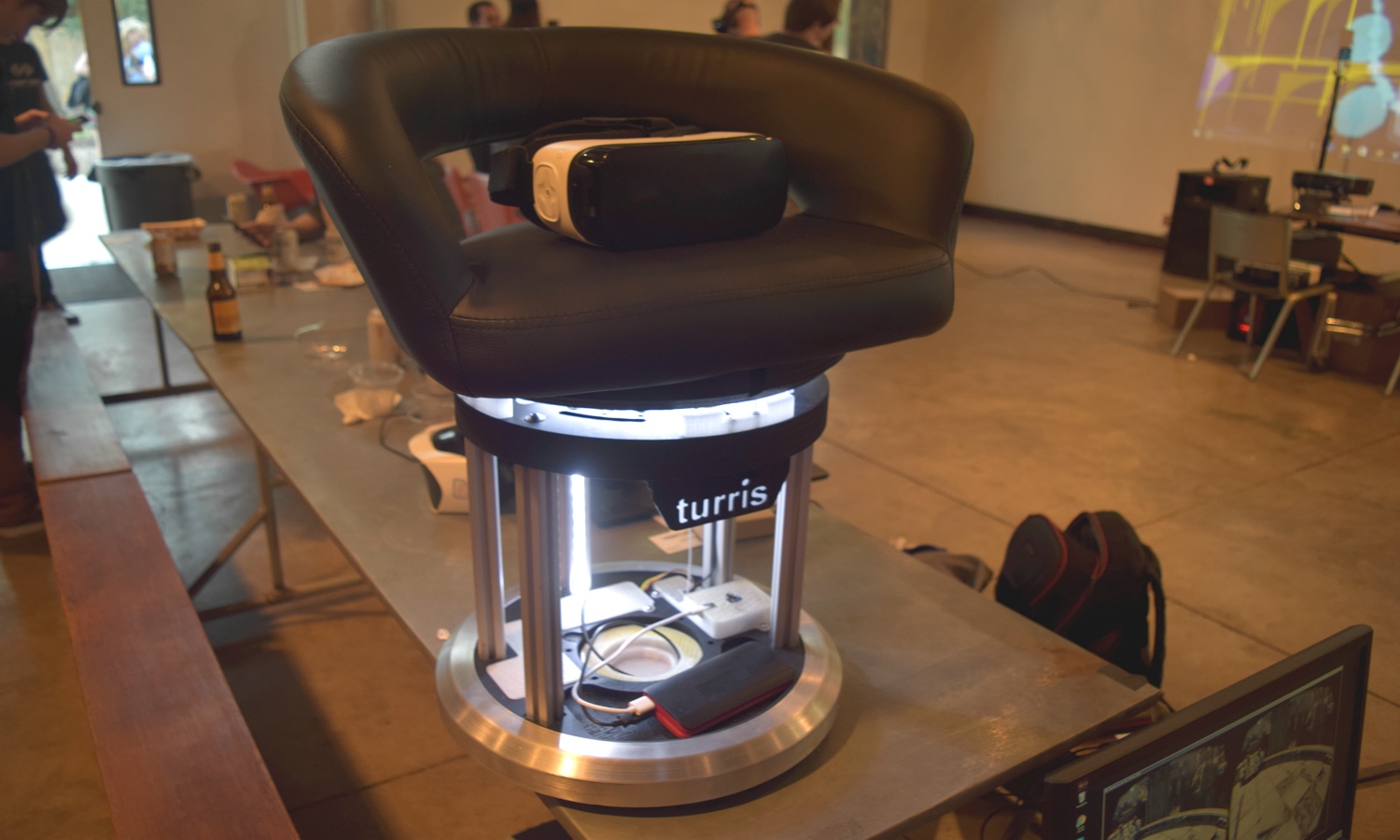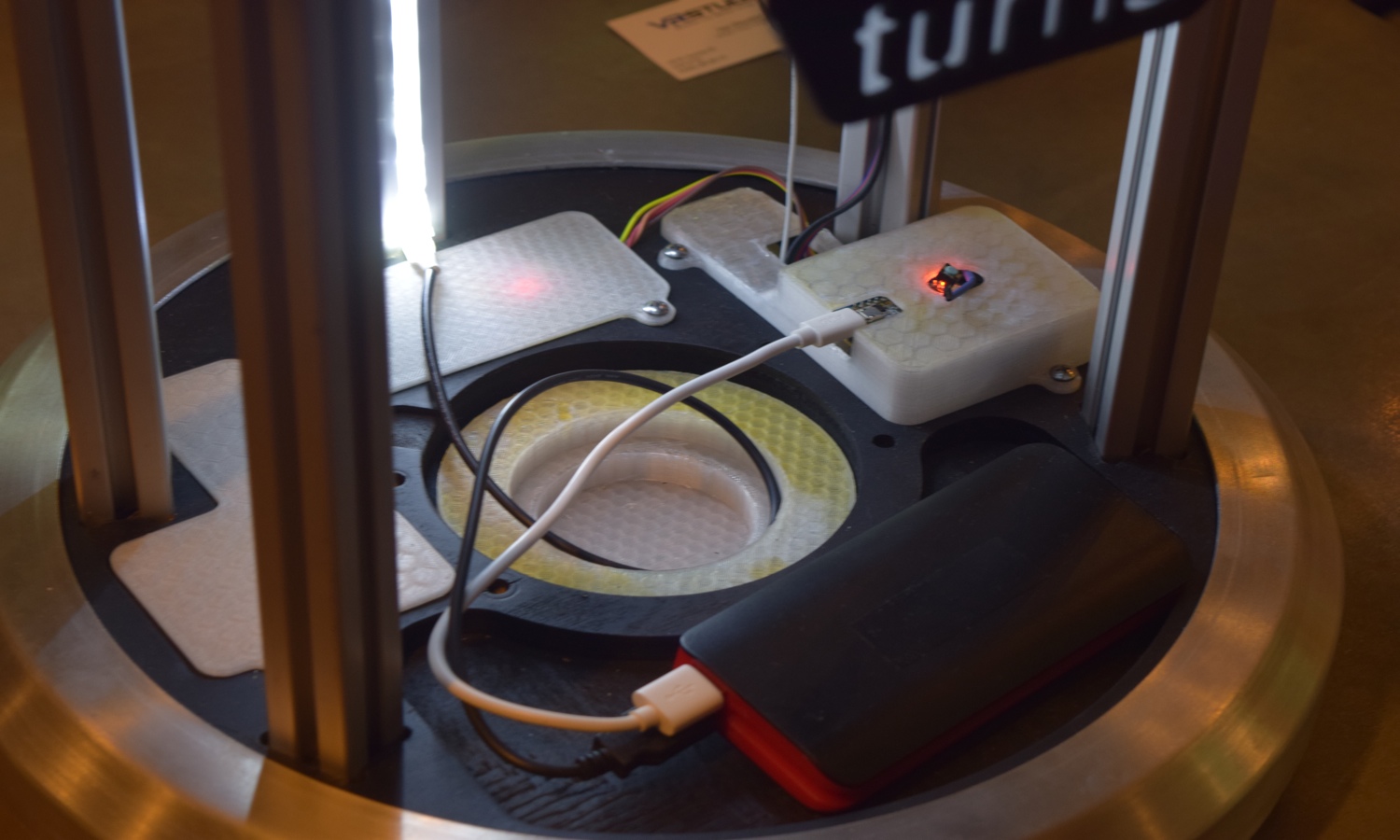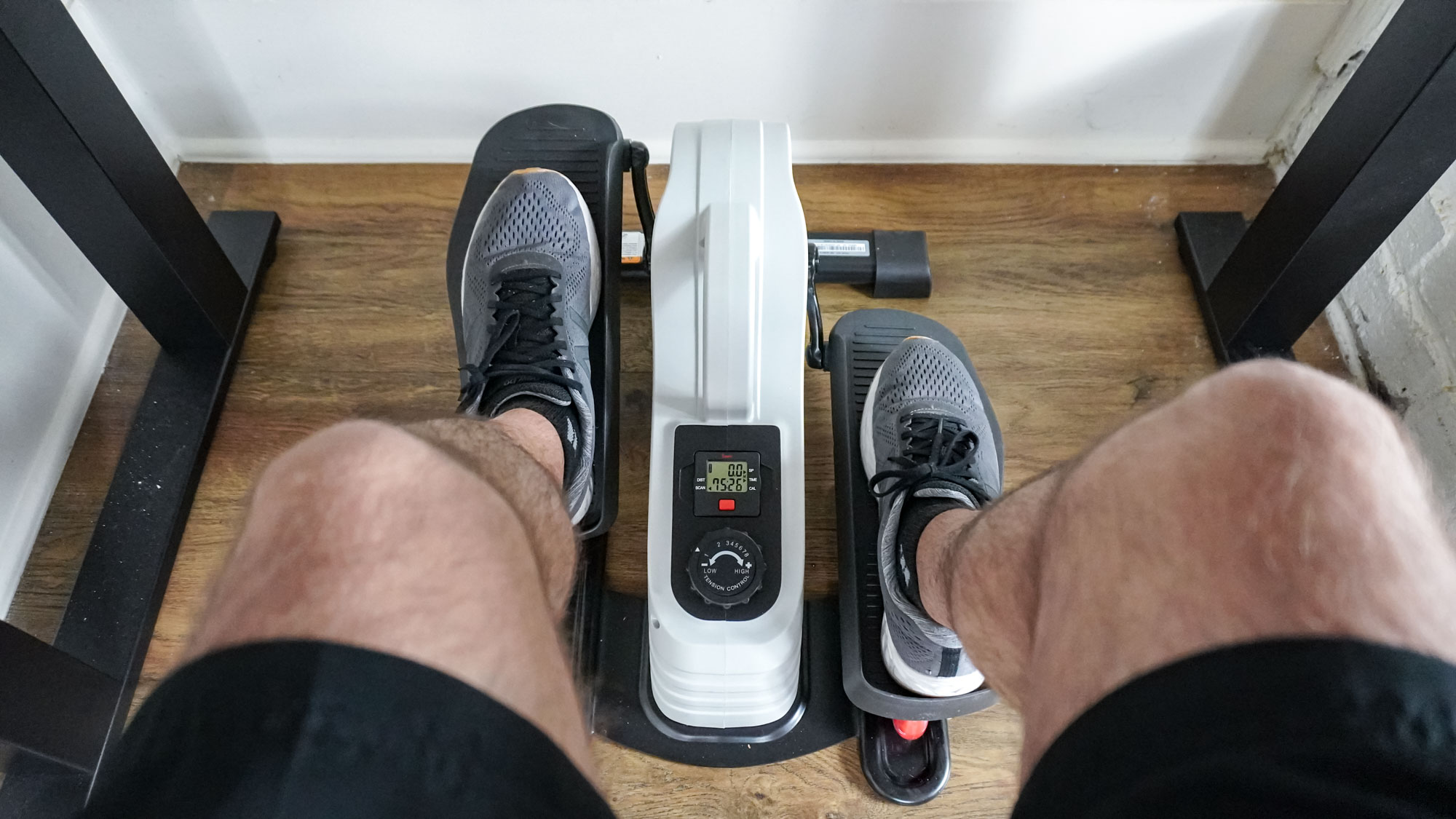This $3,000 Chair Turns Your Butt Into a VR Controller
The 360-degree Turris chair puts a new spin on virtual reality controllers by enabling you to move without getting up.
AUSTIN, Texas — Stationary virtual reality headsets like the Samsung Gear VR or the Oculus Rift can deliver amazing VR experiences — provided that you have a chair that can spin 360 degrees. If not, you'll be left craning your neck like Linda Blair in "The Exorcist." Although it's priced at a wallet-draining $3,000, the Turris puts a new spin on VR.
Dubbed "revolutionary seating for VR" by its creators, Praevidi, the Turris is the world's first chair designed specifically for virtual reality. One might be quick to write it off as a stool with a glowing base, but with a built-in PC and pivot-tracking motion sensors, the Turris is more than a gaudy piece of furniture. I had an opportunity to sit a spell on the Turris and was impressed with its responsiveness and excited by its potential applications.

The Proper Way to Sit
One does not simply sit on the Turris. Due to its highly sensitive sensors, you have to sit full center on the black cushion with a goal to land at a neutral setting. Lean too much in one direction, and you'll set the character you're controlling in the custom-built demo app running up or down a path. After correctly positioning myself on the stool, the Praevidi rep handed me the Oculus Rift, and we were off to the races.
MORE: Oculus Rift vs HTC Vive - What Should You Buy?
In case you're wondering, Turris supports the Rift, HTC Vive and even Bluetooth-dependent headsets like the Gear VR. The high-tech stool has ports built right into the back of the stool. The end result is a hands-free wired solution that keeps the myriad cables out of foot's reach. Turris can also be used with augmented reality programs.

Running in Place
For the demo, I was controlling a character in first-person perspective. The Rift controlled the camera direction, which I tested by doing a 360 spin. When I wanted to move forward or backward, I leaned in the corresponding direction to get moving. Leaning to the right or left produced a strafing movement, similar to what you'd find in a first-person shooter.
With the headset and chair in tandem, I discovered I could turn my head to the left or right while maintaining a forward (or backward) movement. In practice, it's like looking at something interesting across the street while still moving toward your destination. Typically, without a controller, VR wearers will turn their whole virtual body towards the object they're looking at.
Although this is a fairly natural movement in real life, it takes time to get used to it virtually. It was a little disorienting to be barreling ahead with your camera view off to the side somewhere.
MORE: Oculus VR Inventor Luckey Talks Virtual Reality's Future
Bottom Line
Overall, the Turris has the makings of a solid VR peripheral. The hands-free, 360-degree movement is a big deal in and of itself, but its ability to work with both PC and mobile VR headsets is a boon. Using your shifting weight as a controller can be a little off-putting at first but feels natural once you get the hang of it.
I'd love to see Turris paired with an endless runner game or a shooter, provided there's a cooperative device to perform the shooting action. However, until Praevidi can find a way to lower the price tag, this VR stool will mostly be a plaything for developers.
Sign up to get the BEST of Tom's Guide direct to your inbox.
Get instant access to breaking news, the hottest reviews, great deals and helpful tips.
Sherri L. Smith has been cranking out product reviews for Laptopmag.com since 2011. In that time, she's reviewed more than her share of laptops, tablets, smartphones and everything in between. The resident gamer and audio junkie, Sherri was previously a managing editor for Black Web 2.0 and contributed to BET.Com and Popgadget.

